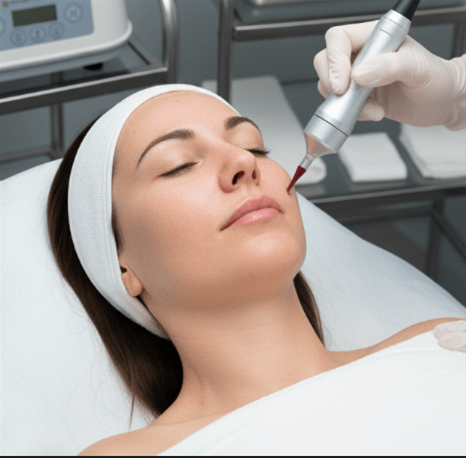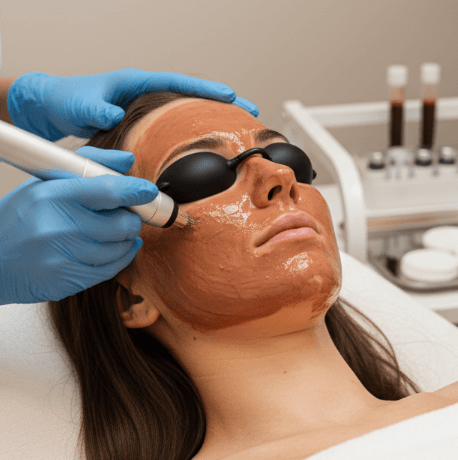Before undergoing SMILE eye surgery (Small Incision Lenticule Extraction), a detailed preoperative medical and ocular evaluation is essential to determine whether you’re a safe and suitable candidate. Unlike a routine eye exam, the SMILE evaluation involves advanced diagnostic tools, imaging technologies, and personalized assessments that help your refractive surgeon understand the structure and health of your eyes.
This guide explains each test involved, what it measures, and why it matters in determining your candidacy for SMILE surgery.
🔎 Why Is a Preoperative Evaluation Necessary?
SMILE is a safe and effective vision correction procedure, but not everyone is a candidate. The evaluation helps:
- Rule out contraindications (e.g., keratoconus, severe dry eye)
- Confirm corneal health and stability
- Determine if your refractive error falls within approved treatment ranges
- Establish baseline data for post-op comparison
✅ Comprehensive Tests Required Before SMILE Surgery
1. Refractive Error Measurement
- Purpose: To assess the degree of nearsightedness (myopia) and astigmatism.
- How it’s done: Using an autorefractor and manifest refraction (where the patient gives feedback on lens choices).
- Importance: SMILE is FDA-approved for up to -10.00 D of myopia and up to -3.00 D of astigmatism. Stable prescription for at least 12 months is required.
2. Corneal Topography
- Purpose: To create a map of the curvature of the cornea’s surface.
- How it’s done: With non-contact imaging systems (e.g., Pentacam, Orbscan, or Atlas).
- Importance: Detects irregularities or signs of keratoconus and determines if the cornea is smooth and symmetrical—both critical for safety.
3. Corneal Tomography
- Purpose: To assess both the anterior and posterior curvature of the cornea and measure corneal thickness (pachymetry).
- How it’s done: Devices like Scheimpflug cameras or OCT (optical coherence tomography) capture 3D images.
- Importance: Identifies early signs of corneal ectasia and ensures the cornea is thick enough to safely remove a lenticule.
4. Pachymetry (Corneal Thickness Measurement)
- Purpose: To measure central and minimum corneal thickness in microns.
- How it’s done: Using optical (non-contact) or ultrasound pachymetry.
- Importance: SMILE removes tissue from within the cornea. Adequate thickness (typically ≥ 500 microns) is required to maintain corneal stability post-op.
5. Tear Film Evaluation
- Purpose: To assess for dry eye disease, which can affect healing and visual outcomes.
- How it’s done:
- Schirmer’s test (tear quantity)
- Tear break-up time (TBUT) (tear quality)
- Ocular surface staining (checks for damage)
- Importance: SMILE reduces dry eye risk compared to LASIK, but pre-existing dry eye must be identified and treated beforehand.
6. Wavefront Aberrometry
- Purpose: To detect higher-order aberrations (HOAs) that can affect vision quality, especially in low light.
- How it’s done: A device analyzes how light waves travel through your eye.
- Importance: Helps rule out optical irregularities that could impact surgical success. While SMILE does not use wavefront-guided correction, it still informs treatment planning.
7. Pupil Size Measurement
- Purpose: To evaluate pupil diameter under different lighting conditions.
- How it’s done: Using a pupillometer or infrared camera.
- Importance: Large pupils may increase the risk of post-op glare, halos, and night vision disturbances, especially in low-light environments.
8. Intraocular Pressure (IOP) Measurement
- Purpose: To screen for glaucoma or ocular hypertension.
- How it’s done: With a tonometer (e.g., non-contact air puff or Goldmann applanation).
- Importance: Elevated IOP may require management before surgery. While SMILE doesn’t involve deep penetration into the eye, ocular health must be fully evaluated.
9. Slit-Lamp Biomicroscopy
- Purpose: To inspect the front part of the eye including the cornea, lens, conjunctiva, and anterior chamber.
- How it’s done: Using a slit-lamp microscope with high magnification.
- Importance: Identifies surface disease, cataracts, or signs of inflammation that might affect candidacy or healing.
10. Dilated Retinal Exam
- Purpose: To assess the retina, macula, and optic nerve, especially in patients with high myopia.
- How it’s done: Pupil dilation with eye drops, followed by ophthalmoscopy.
- Importance: Myopic eyes are at increased risk for retinal thinning, tears, or detachment, which must be treated prior to laser vision correction.
🧾 Optional Tests (As Needed)
Depending on your medical history, additional tests may include:
- Ocular coherence tomography (OCT) of the macula (especially in high myopes)
- Meibography (to assess oil gland function in dry eye)
- Contrast sensitivity tests
- Endothelial cell count (if there’s history of corneal disease)
⚠️ Conditions That May Disqualify You
During this evaluation, your surgeon will also rule out:
- Keratoconus or ectasia
- Unstable refractive error
- Severe dry eye disease
- Autoimmune or connective tissue disease (e.g., lupus, RA)
- Corneal scarring or infections
- Pregnancy or breastfeeding
- Previous corneal surgery (depending on type)
Summary: What to Expect at Your Pre-SMILE Evaluation
| Test | Purpose | Why It Matters |
|---|---|---|
| Refraction | Measures nearsightedness/astigmatism | Determines eligibility and treatment plan |
| Topography/Tomography | Maps corneal shape and thickness | Screens for keratoconus, checks corneal integrity |
| Pachymetry | Measures corneal thickness | Ensures safe lenticule removal |
| Tear film tests | Assesses dry eye severity | Reduces risk of poor healing and discomfort |
| Pupil size | Measures pupil diameter | Prevents glare and halos at night |
| Slit-lamp exam | Evaluates anterior eye health | Detects infection, inflammation, or lens issues |
| Retinal exam | Evaluates retinal and optic nerve health | Prevents vision loss from untreated retinal disease |
Final Thoughts
The medical evaluation before SMILE eye surgery is far more than a vision test—it’s a thorough ocular health assessment designed to protect your safety and optimize your visual outcomes.
If you’re considering SMILE:
- Expect the evaluation to take 1.5–2 hours
- Be prepared for eye dilation (temporary blurred vision/light sensitivity)
- Bring a list of medications and medical conditions to discuss with your surgeon




